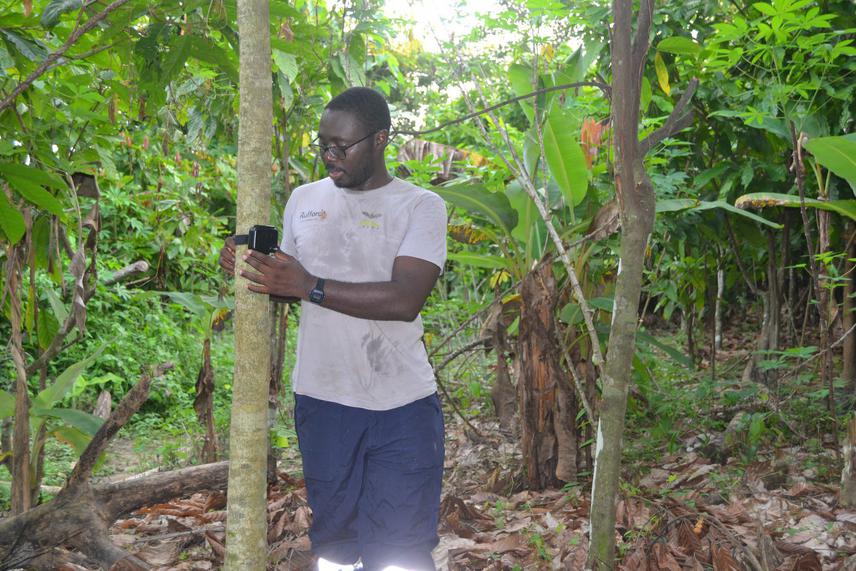Evans Ewald Nkrumah
Other projects
19 Apr 2017
Surveying for Ghana’s Critically Endangered Robbins House Bat in Eastern Ghana
20 Jun 2024
Empowering Local Communities for the Conservation of the Robbins House Bat in Ghana
This project is about the conservation of a Data Deficient bat, Robbins’ house bat (Scotophilus nucella). Historically, the species was first recorded in 1967 at Nkawkaw in Ghana, and later described in 1983. It is currently known to occur in Ghana and Côte d'Ivoire, as records from Eastern Africa have been challenged. The total number of individuals known to science is less than 100.
Presently in Ghana, the species is known in the Krokosua Hill Forest Reserve and the Pra-Anum Forest Reserve. As a species with strong affinity to forest environments, deforestation and habitat modification severely impact their population. At Pra-Anum Forest Reserve where the species was recently recorded, illegal mining and logging activities, farming encroachment, and invasive plant species are reducing the quality available habitats for the species. It is imperative that we study the population of Scotophilus nucella in this forest and surrounding vegetation to understand their habitats needs for consideration in management plans and conservation decisions.

Team leader installing Audiomoth bat detector in a nearby farms around the reserve.
Our primary goal for implementing this project is to contribute to the conservation of Scotophilus nucella at the national and global level. Specifically, we want to understand the species foraging ecology, and to gain conservation support at Amantia for community-level bat conservation initiatives towards their protection and conservation. To achieve these objectives, the project is embarking on mist-netting and acoustic surveys in the forest to help understand habitats and prey items selected whiles foraging. The project will embark on community education at Amantia to gather support for the species conservation. An important aspect of this project is capacity building geared towards the training of university students and citizen scientists at Amantia in bat acoustic monitoring and field experimentation.
The project is expected to achieve the following upon completion: 1) A complete checklist of bats in the Pra-Anum Forest reserve provided, 2) Important foraging habitats of Scotophilus nucella at Amantia identified, 3) Prey items consumed by Scotophilus nucella identified, 4) Conservation awareness generated at Amantia for species conservation, 5) Citizen Scientist and University students trained in bat field experimentation.